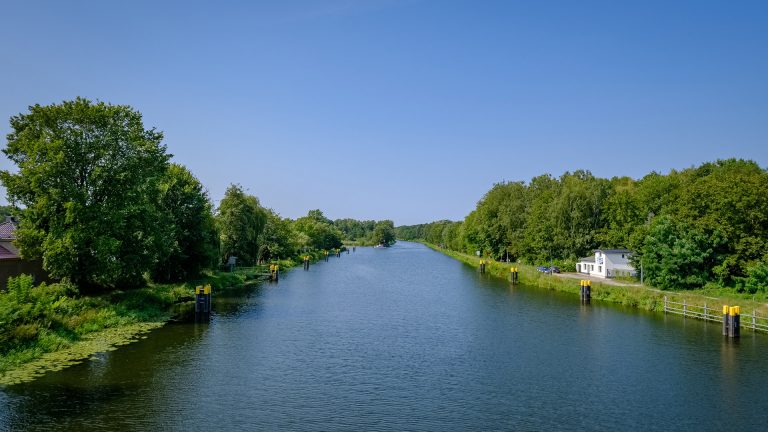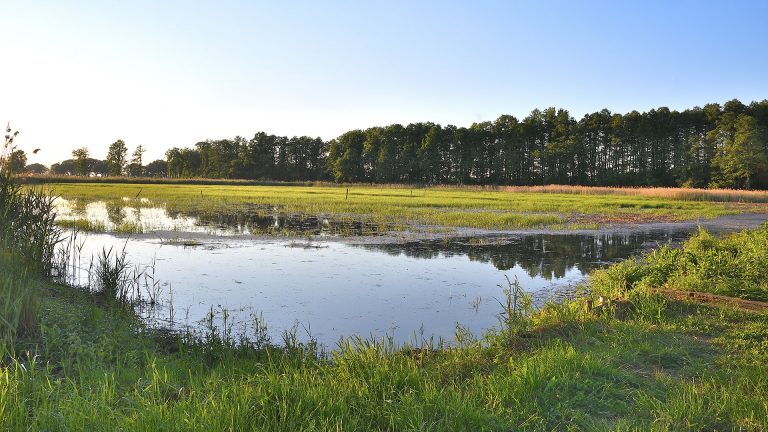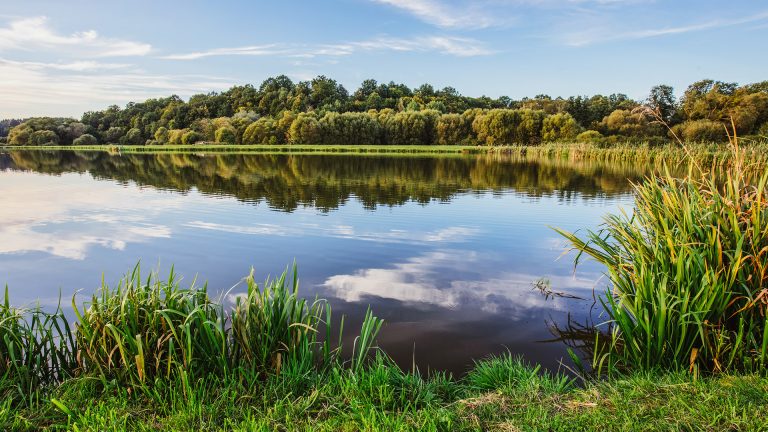Bottom sediments
As a result of sedimentation of organic and mineral agents resulting from erosion, as well as components precipitated from water or deposited with surface runoff, sediments are formed on the bottom of lakes, rivers, canals and dam reservoirs.
The sediments, that accumulate on the bottom of the reservoir, contain a significant part of the water pollutant compounds. Therefore, one of the necessary actions aimed at cleaning of a water reservoir is the removal of bottom sediments.
During the pumping of the hydrated sludge in the SoilTain® geosynthetic tubes, the appropriate amount of polyelectrolytes is dosed, depending on the measured flow rate and the dry matter content of the sludge. The effect of the polyelectrolytes addition, is the binding of solid particles into larger aggregates, causing a change in the structure of the sediment and greatly improving their filtering properties. As a result, the water separated from the solid fraction is much more efficiently drained through the container coat.
In case of projects related to the dewatering of extracted bottom sediments, several containers are filled at same time in order to ensure a smooth process of the realization. Geosynthetic SoilTain® tubes can be placed in a slight depression of the terrain and lined with a sealing foil.
After dewatering process and final drying of bottom sediments is completed, in effect a significant reduction of sludge volume is received. The material dried this way, can be removed by cutting of the geosynthetic sleeve and then transported to the final disposal site. It is also possible to bury the containers after the end of the project. The area can be covered with greenery or used for other purposes.
The solution offered by our company, not only facilitates and accelerates the construction works, but at the same time, provides also improvement of the economical conditions.
The sediments are extracted with a minimal use of heavy equipment. A significant reduction in the hydration of the bottom sediments is observed, so they can be then transported without the use of tub-type trucks and trailers.
An additional advantage, which should be mentioned here, is the fact, that the conditioned sludge is transferred by the pipeline directly to the geosynthetic tube where it gets dewatered. Therefore, they are not in a direct contact with the atmosphere, which means a significant reduction of pollutants concentration in the air (if any), and hence, it minimizes the intensivity of an unpleasant smell.

Rivers and canals
The technology of SoilTain® geosynthetic tubes allows dewatering of bottom sediments, using a suction or a cutter-suction dredgers with very high capacities.

Breeding ponds
A common problem in fish farming is the formation of bottom sediment quite regularly and in large numbers. Contaminants accumulated in sediments pose numerous threats to fish farming, causing: a change of the flow regime in pond facilities

Lakes, lagoons
The technology of SoilTain® geosynthetic tubes enables the extraction of the residual sediment from the bottom without draining water away from the reservoir, and thus the degradation of the water ecosystem is much lower.

Seaports
A serious problem are the sea sediments lying on the bottom of the ports, polluted in high degree by a number of oil derivatives from the ships passing there.